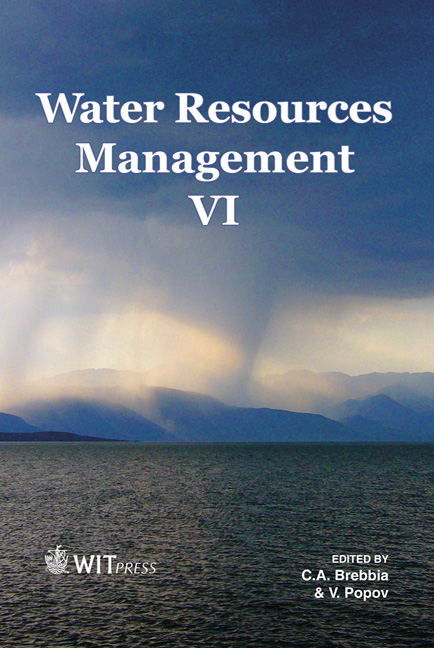Use Of Electrophoresis Technique To Study Removal Of Toxic Metal Ions From Waste Water By Adsorption On Mineral Surface
Price
Free (open access)
Transaction
Volume
145
Pages
11
Page Range
747 - 757
Published
2011
Size
470 kb
Paper DOI
10.2495/WRM110671
Copyright
WIT Press
Author(s)
S. E. Elmofty
Abstract
Electrophoresis technique is used to investigate the sorption possibility of toxic metal ions from aqueous solutions on clay minerals. Removal of heavy metals such as cobalt, nickel, lead and cadmium from waste water was investigated. Electrophoresis tests were performed as a function of pH for different heavy metal cations to identify the mode and extent of interactions of adsorption in the system. The adsorption isotherms and pH effect indicate that adsorption of metal ions increase in the order of Co< Ni < Cd < Pb. Keywords: electrophoresis, toxic heavy metals, adsorption, electrical double layer. 1 Introduction Nowadays, large quantities of metals and pollutants that are currently entering the environment from various sources, thus, alternative methods to filter wastewater are being studied. The interest towards finding cheaper and more efficient adsorbents has created a surge in the amounts of research to be conducted about adsorption. One of these areas of research focused upon cation exchange phenomena. Mineral, such as clay, can absorb wastes from water (e.g. Kara et al. [1]). Clay and sepiolite, both members of the palygorskite family, are two such clays that adsorb metal cations from solutions. Crystal structure, chemical composition, exchanging cations and small crystal lattice size are responsible for much unique prosperity such as, large chemically
Keywords
electrophoresis, toxic heavy metals, adsorption, electrical double layer





